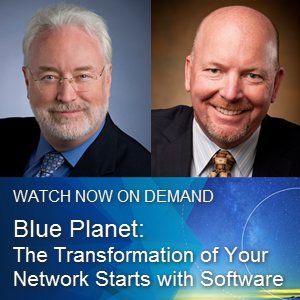What is the “Right” Approach to Open Source?
 Abel Tong (@EnableBlue) is part of Ciena's Blue Planet division and is responsible for helping network operators transform their networks by leveraging SDN and NFV to create new services while simplifying their network operations.
Abel Tong (@EnableBlue) is part of Ciena's Blue Planet division and is responsible for helping network operators transform their networks by leveraging SDN and NFV to create new services while simplifying their network operations.
This is the fifthin a series of posts highlighting Blue Planet’s new architecture and features. Other posts:
- Ciena Blue Planet unveils the dawn of service orchestration
- TOSCA and YANG? It’s not either/or…it’s both
- Apply BPMN to Enable Network Transformation at the OSS
- Behind the scenes with Ciena's new Blue Planet architecture
- Four Reasons You Want a Micro-Services Architecture
So, here we go again. We in the telecom industry are looking at how to transform our networks with SDN, NFV and orchestration. But now, we’re talking “open source” and the gang’s all jumping on the bandwagon.
Pundits are saying open source is good. In fact, just being open doesn’t seem to be enough, now there’s a term “truly open.” OK, but before we jump in with both feet, let’s take a closer look.
The de facto open source leaders
Let’s consider some of the best and most useful open source software we have in industry today: Linux, Docker and Kafka.
Linux is THE de facto standard operating system and at the heart of essentially all servers and devices available today. Over the last year or so, Docker has become the best way by which to deploy large-scale distributed application software When you hear people talk about containers, they are usually talking about Docker. Kafka is a high throughput distributed messaging system. Kafka routinely handles thousands of simultaneous reads and writes each of which may be hundreds of megabytes of data.
All of these software packages exhibit the outstanding properties that we associate with open source – highest quality, tremendous flexibility with solid security and full interoperability.

Open source gives users choices and protects against vendor lock-in. Open source software like the options mention above is being used by millions and is being deployed across all kinds of different applications. And maybe most significantly, these open source projects are supported by an active community which is contributing work to a product they are passionate about.
How open is your “open” SDN controller?
 Now, let’s take a look at what we have with open source SDN controllers such as Open Daylight (ODL). ODL is not yet deployed, but quite a few large equipment vendors have announced their support for it. Being early days, it is probably premature to expect the highest quality, secure or well-tested code.
Now, let’s take a look at what we have with open source SDN controllers such as Open Daylight (ODL). ODL is not yet deployed, but quite a few large equipment vendors have announced their support for it. Being early days, it is probably premature to expect the highest quality, secure or well-tested code.
In fact, at this point, ODL is a somewhat incomplete as an SDN controller. Vendors offering ODL controllers are really building SDN controllers “based on ODL,” but with a lot of proprietary code built around it.
Essentially, what we have is a slew of vendor proprietary controllers, who take ODL as a way to jumpstart development, but are laden with proprietary code. Thus, vendor ODL controllers are nothing more than another form of vendor lock-in with no real choice. Not to mention, these vendor proprietary controllers do not have large groups of users, diverse application bases, or passionate developers. In other words, the dynamic wisdom of the community is also missing.
Open Source…with your eyes open
Now, don’t get me wrong. This is certainly not a knock against Open Daylight, which we are an active member and contributor to. Ciena Blue Planet is big supporter and adopter of open source, including not only Linux, Docker and Kafka, but also Spark, ZooKeeper, Cassandra, Django, Node and many, many others. Ciena is also a member of ONOS (serving on the board of directors), OPNFV, ONF, MEF as well as other organizations building open source software.
The point here is to be prudent. Use open source where it makes sense. Build the best possible product by leveraging the best available components. But don’t get caught up in the dogma.
Open Source for SDN, NFV and Orchestration
What about the network operator’s perspective? Aren’t network operators pushing for open source for their SDN and NFV deployments?
The reality is that to this point, most of our customer’s use cases sit on top of brown field networks that don’t take advantage of open source components for their orchestration.
What network operators really care about is interoperability, security, and freedom of choice without vendor lock-in. Software best practices like micro-services and containerization, combined with best-in-class open source, and applied together with standards like TOSCA, YANG, BPMN, and others, lead to a powerful and flexible platform for achieving these objectives. These are all qualities we’ve built into Blue Planet.
More importantly, network operators are looking to solve real networking problems. Blue Planet integrates best practices, open source and standards as part of an SDN, NFV and orchestration platform that solves those problems. Blue Planet is already being used in a number of production network environments to fulfill diverse challenges including SDN-WAN automation, NFV orchestration and multi-domain service orchestration.
I welcome your thoughts and comments below, or find me on Twitter at @EnableBlue.




